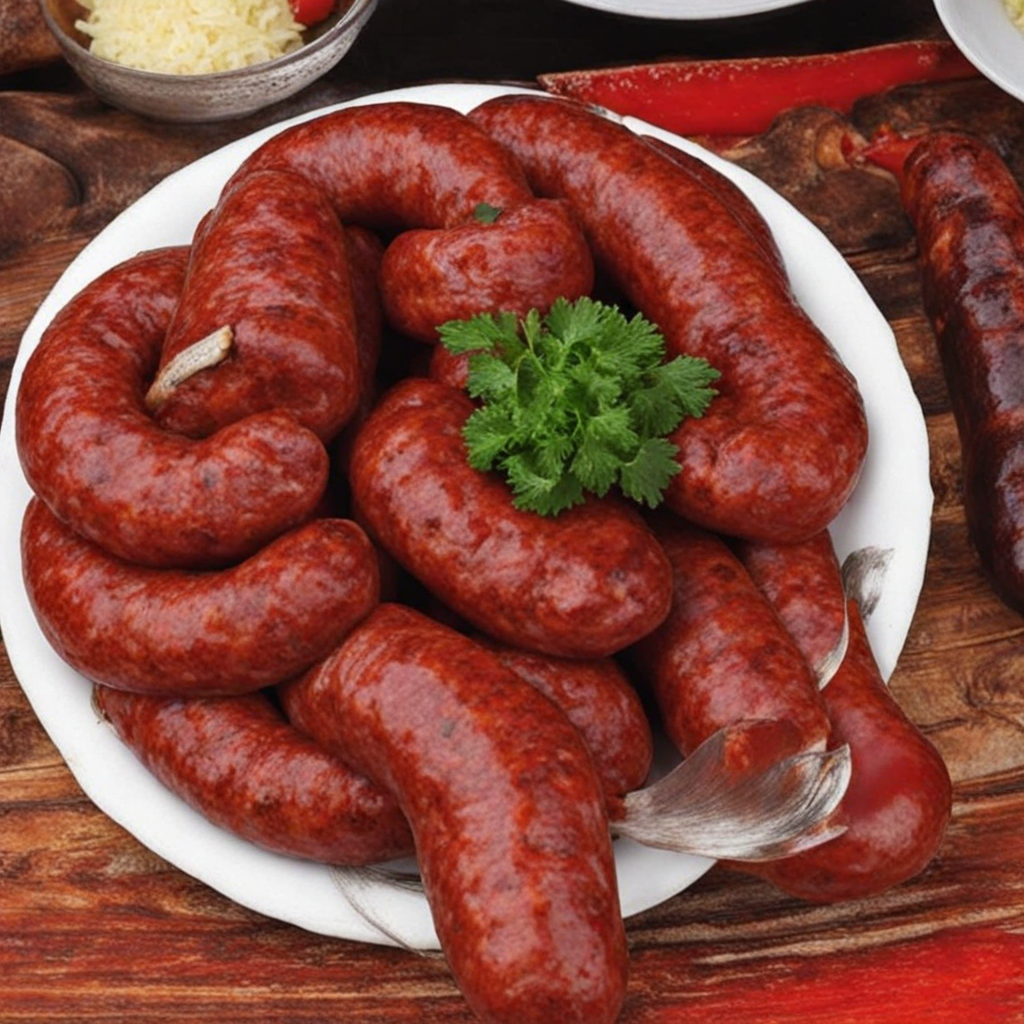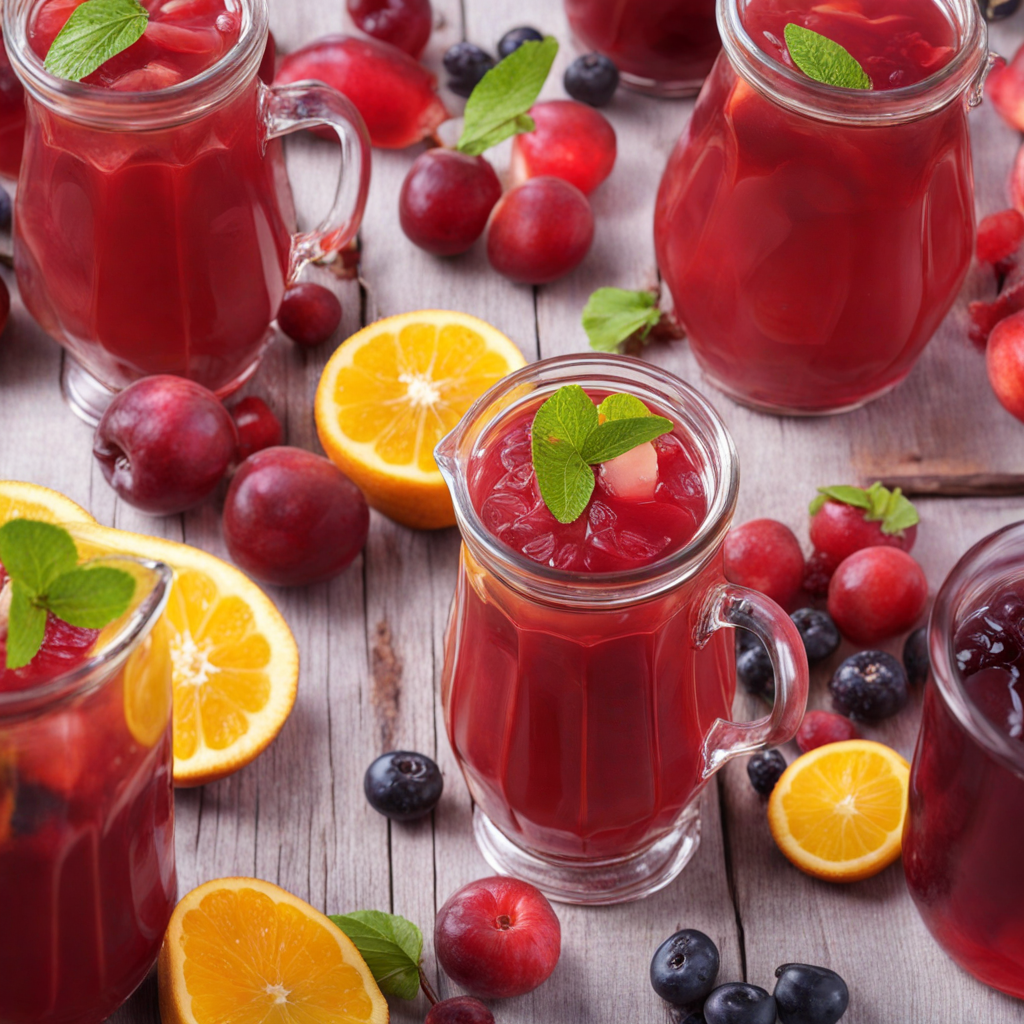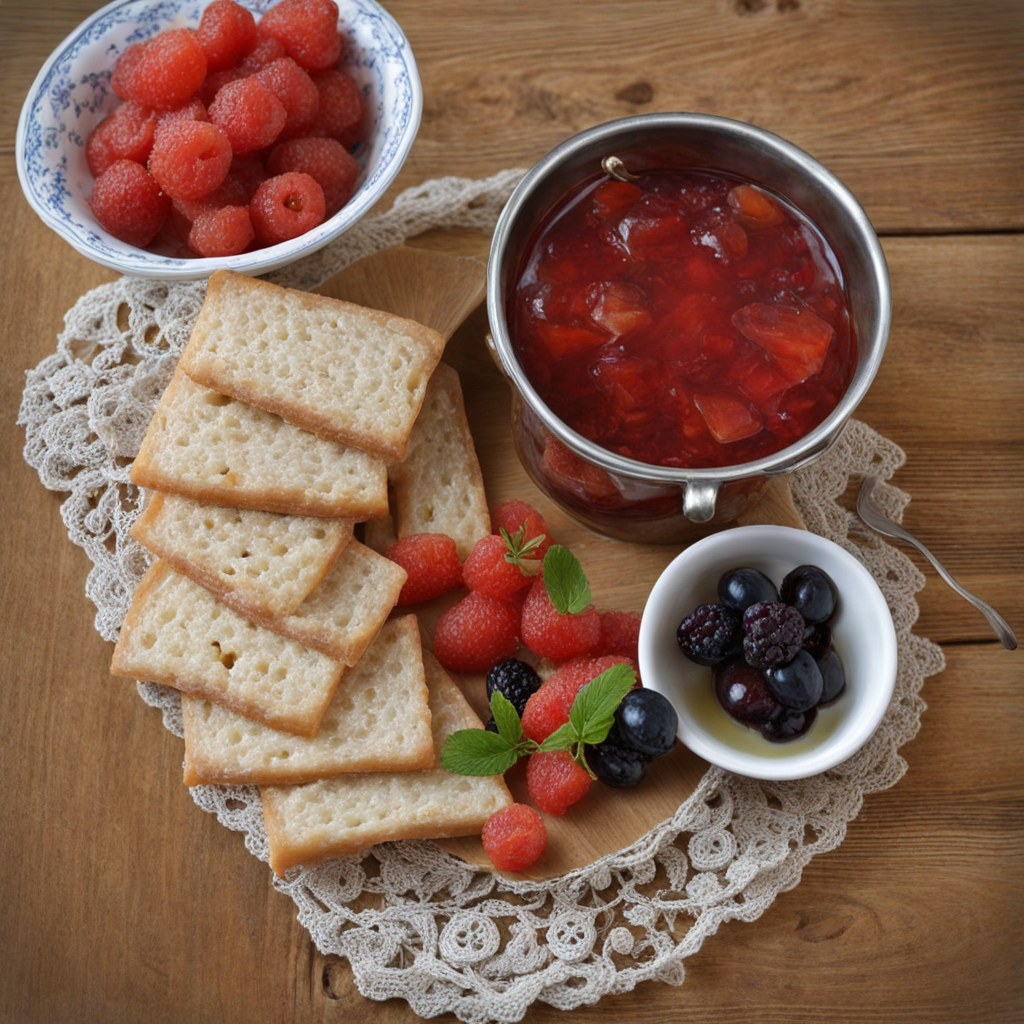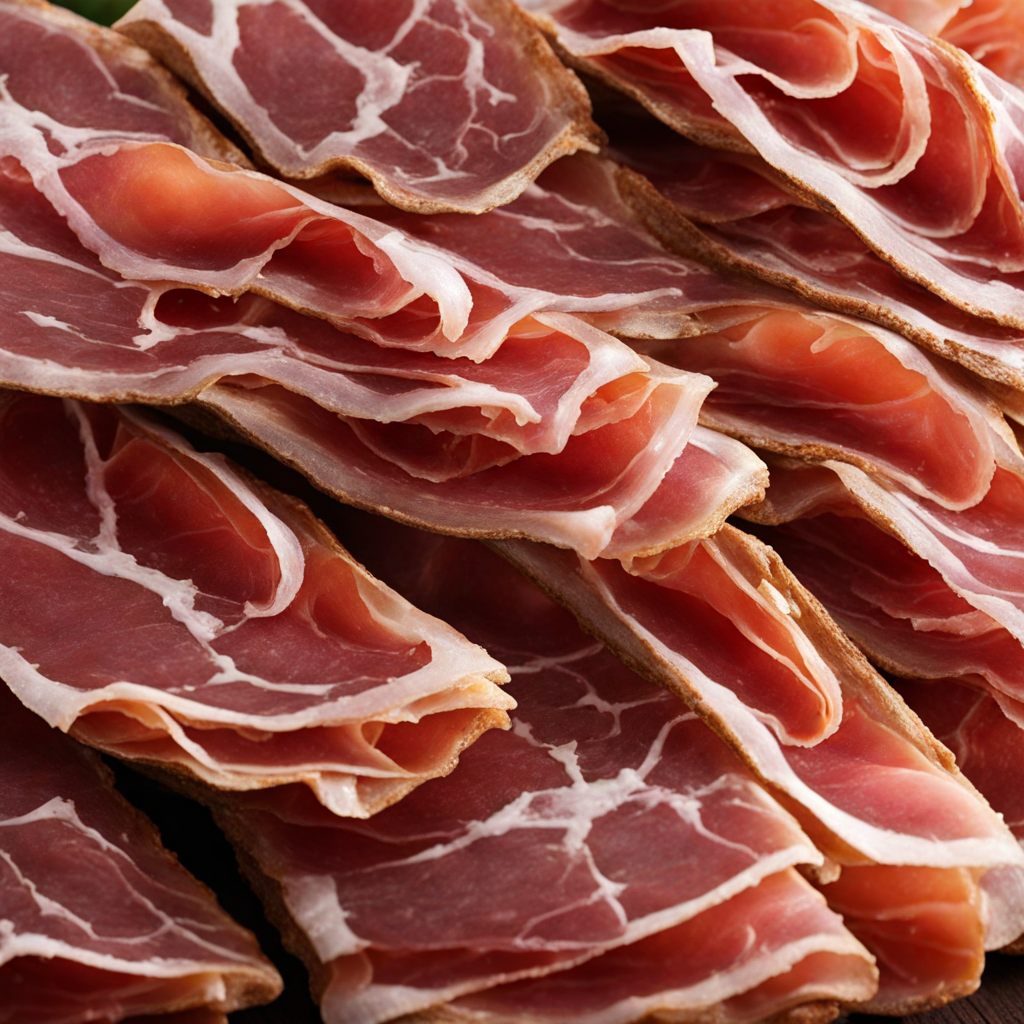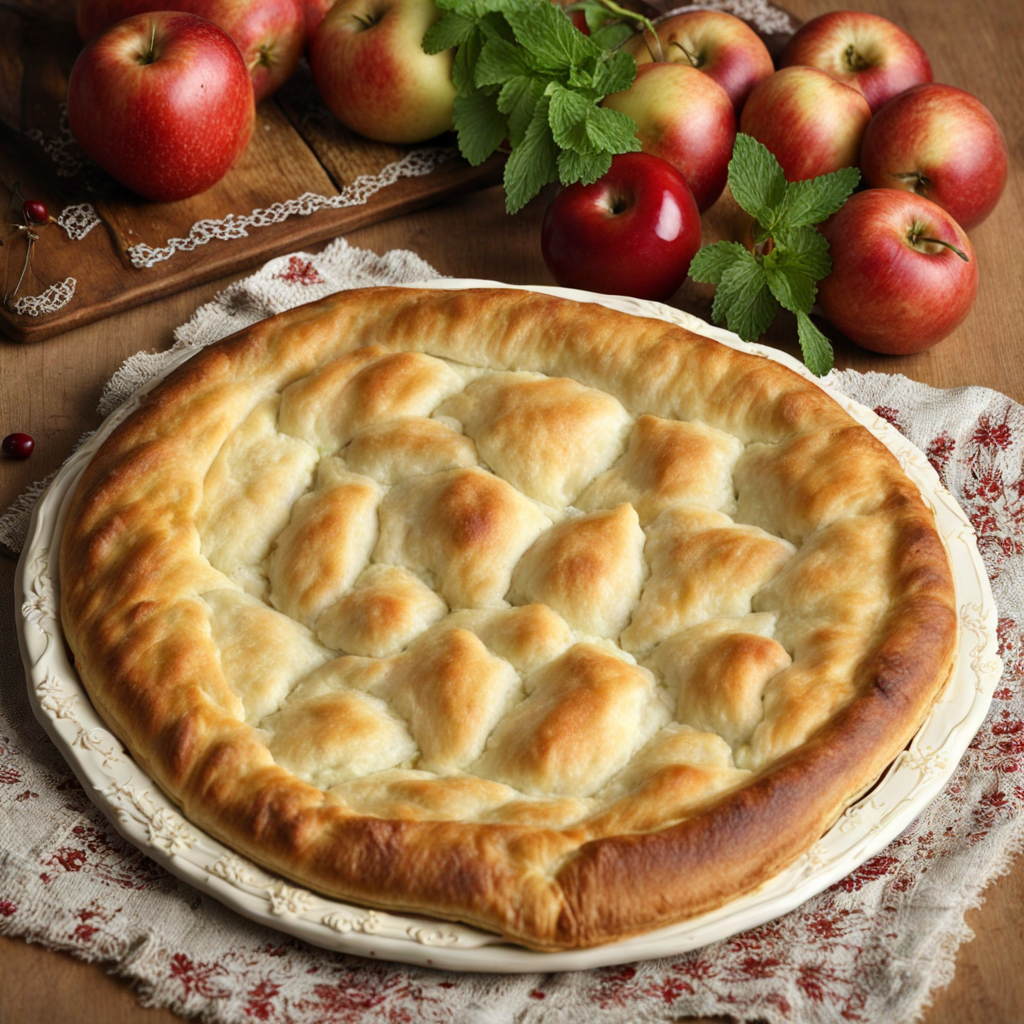Kulen
Kulen is a traditional Serbian delicacy that tantalizes the taste buds with its rich and complex flavors. This cured sausage is made primarily from high-quality pork, seasoned with a distinctive blend of spices, including paprika, garlic, and black pepper. The vibrant red hue that characterizes Kulen comes from the generous use of paprika, which not only adds color but also imparts a mild yet smoky flavor that is central to its identity. The meat is coarsely ground and then stuffed into a natural casing, resulting in a hearty texture that is both satisfying and enjoyable to chew. As you take your first bite of Kulen, you will experience an explosion of flavors that dance harmoniously on your palate. The initial taste is savory and slightly spicy, balanced perfectly by the aromatic notes of garlic and the subtle heat of the pepper. The slow curing process allows the flavors to meld, creating a depth that is both robust and nuanced. Often enjoyed as part of a charcuterie platter, Kulen pairs beautifully with crusty bread, pickles, and a glass of local wine, making it a perfect accompaniment for gatherings and celebrations. What sets Kulen apart is not only its taste but also its cultural significance. This beloved dish is often associated with family traditions and regional pride, particularly from the Slavonia region of Serbia. Each family may have its own secret recipe, passed down through generations, which adds a personal touch to this already cherished food. Whether enjoyed during festive occasions or as a simple snack, Kulen embodies the spirit of Serbian cuisine, inviting food lovers to explore its heritage while savoring every bite.
How It Became This Dish
The History of Kulen: A Serbian Culinary Treasure #### Origins and Early Beginnings Kulen, a flavorful and spicy cured sausage, is a culinary gem that hails from the regions of Serbia, particularly the Vojvodina province. Its roots can be traced back to the ancient traditions of meat preservation, a necessity in the harsh climates of Eastern Europe. Curing meats has been a practice as old as civilization itself, where the need for sustenance during the colder months prompted communities to develop techniques that would extend the shelf life of their food. The exact origins of kulen are somewhat shrouded in mystery, but it is widely believed to have been influenced by the culinary practices of the Austro-Hungarian Empire, which encompassed parts of present-day Serbia. The blending of different cultures within the empire contributed to a rich tapestry of flavors and cooking methods. The Slavic populations, with their deep-rooted affinity for meat dishes, particularly embraced the art of sausage-making, which led to the creation of kulen. #### Ingredients and Preparation At its core, kulen is made from high-quality pork, often sourced from local farms where pigs are raised in a traditional manner. The meat is coarsely ground and mixed with a blend of spices that typically includes garlic, paprika, and black pepper. The use of paprika is particularly significant, as it not only adds flavor but also imparts a vibrant red hue to the sausage, making it visually appealing. The mixture is then stuffed into natural casings, traditionally made from pig intestines, and the sausages are hung to dry in a cool, well-ventilated area. This drying process can take several weeks, during which the flavors mature and intensify. The drying method varies by region and family tradition, with some opting for smoking the sausages to add an additional layer of flavor. One of the key features that sets kulen apart from other sausages is its spice blend, particularly the generous use of paprika. This ingredient is not just a flavor enhancer but also a symbol of the region's agricultural heritage, where peppers are cultivated extensively. The preparation of kulen is often a communal activity, bringing families and neighbors together for a day of work and celebration. #### Cultural Significance Kulen holds a special place in Serbian culture and cuisine. Beyond being a mere food item, it represents a connection to the land, community, and family traditions. The act of making kulen is often a seasonal ritual, frequently associated with the autumn harvest when pigs are typically slaughtered. This custom is steeped in the agrarian lifestyle of rural Serbia, where food preservation was essential for survival and sustenance during the long winters. Kulen is not just a dish for everyday meals; it plays a significant role in festive gatherings and celebrations. It is a staple at weddings, holidays, and family reunions, often served as part of a charcuterie platter alongside other traditional cured meats, cheeses, and homemade bread. Sharing kulen with guests is considered a gesture of hospitality, reflecting the warmth and generosity of Serbian culture. In addition to its local significance, kulen has gained recognition on the international stage. In 2010, it was awarded Protected Geographical Indication (PGI) status by the European Union, which helps preserve and promote traditional foods associated with specific regions. This recognition has helped to elevate kulen's status beyond just a regional delight; it is now celebrated as a symbol of Serbian heritage and craftsmanship. #### Evolution and Modern Developments Over the years, kulen has evolved while still retaining its traditional essence. The modern culinary landscape has seen a resurgence in interest in artisanal and locally sourced foods, and kulen has benefitted from this trend. Many small-scale producers have emerged, focusing on high-quality ingredients and traditional methods of production. This has led to a renewed emphasis on authenticity, with producers often sharing their family recipes and stories behind their kulen-making processes. In recent years, there has been an increased interest in food tourism, with visitors to Serbia seeking to experience traditional foods like kulen firsthand. Culinary festivals and events celebrating Serbian cuisine often feature kulen prominently, allowing attendees to sample various regional variations. These festivals provide a platform for producers to showcase their products, fostering a sense of community and pride in local culinary traditions. Moreover, kulen's versatility has allowed it to find its way into modern dishes beyond the traditional charcuterie board. Chefs in Serbia and abroad have begun to incorporate kulen into a variety of recipes, from pasta dishes to gourmet sandwiches. This adaptation showcases kulen’s ability to complement a wide range of flavors while preserving its distinct character. #### Conclusion Kulen is more than just a sausage; it is a symbol of Serbian cultural heritage, craftsmanship, and community spirit. Its rich history, from ancient meat preservation practices to its modern-day revival and international recognition, speaks to the resilience and creativity of the people who have cherished this culinary treasure for generations. Whether enjoyed in a rustic village or a contemporary urban setting, kulen continues to bring people together, fostering connections through shared meals and traditions. As Serbia embraces its culinary legacy, kulen stands as a testament to the country’s vibrant food culture, celebrating the past while evolving for the future. It is a dish that tells a story—a story of tradition, resilience, and the enduring love of good food that transcends borders and generations.
You may like
Discover local flavors from Serbia



